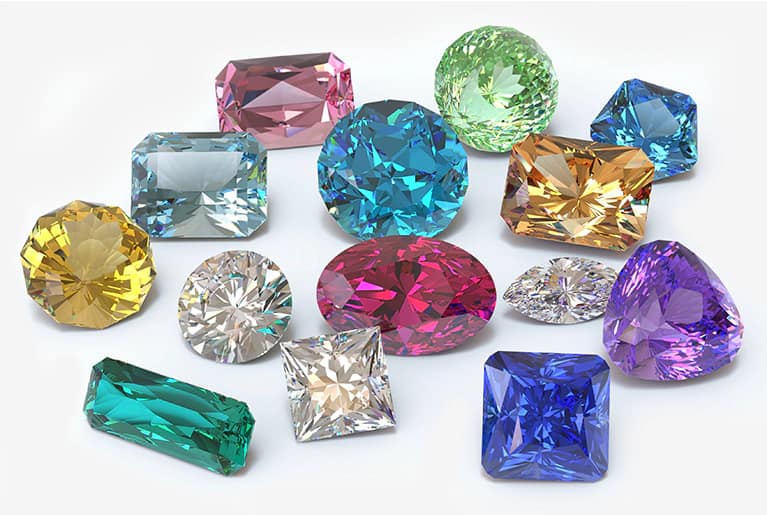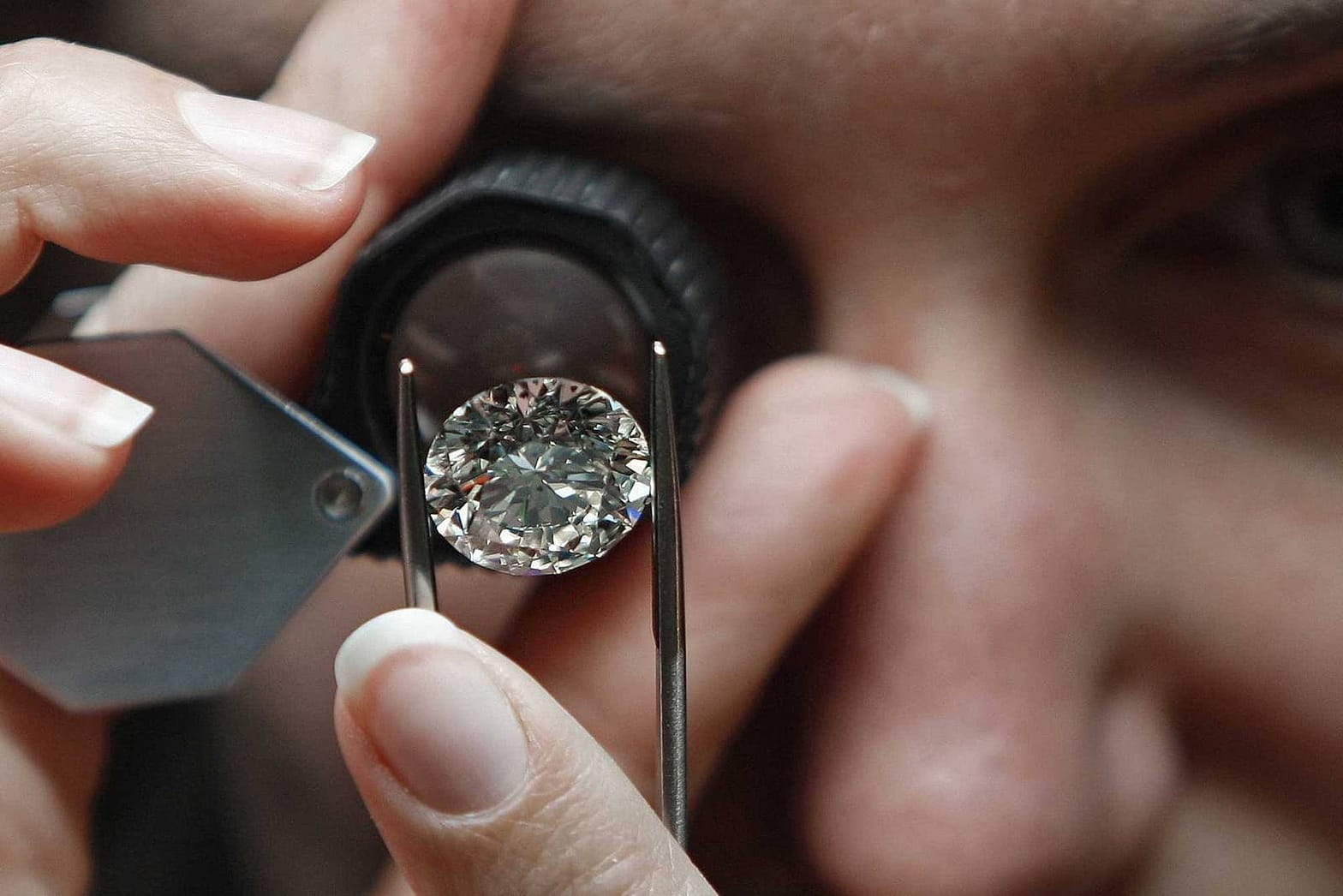Are you worried about being scammed when buying jewelry? Do you want to know how to spot fake gemstones? This article will provide you with all the information you need to ensure you don’t get fooled when purchasing gemstones. We’ll cover the signs to look out for when evaluating a gemstone, as well as tips on how to protect yourself from jewelry scams. Read on to learn how to spot fake gemstones and avoid jewelry scams.
1. Identifying Natural vs. Synthetic Gemstones
When it comes to spotting fake gemstones, it’s important to understand the difference between natural and synthetic gemstones. Natural gemstones are formed naturally in the earth’s crust and are composed of minerals that are found in nature. Synthetic gemstones, on the other hand, are man-made in a laboratory and are composed of the same minerals as natural gemstones, but are not found in nature.
To identify a natural gemstone, start by looking at its colour. Natural gemstones often have more subtle and varied colours than synthetic gemstones, so if the stone has a very uniform hue, it may be a synthetic gemstone. You can also look for inclusions or imperfections in the stone. Natural gemstones usually have more inclusions than synthetic gemstones, so if the stone is very clear and without blemishes, it may be a synthetic gemstone.
The cut of the stone can also help you identify whether it’s a natural or synthetic gemstone. Natural gemstones are often cut in freeform shapes to preserve the inclusions, while synthetic gemstones are usually cut in uniform shapes such as round, oval, or square.
Finally, you can use a gemological report to identify the gemstone. A gemological report is a detailed analysis of the stone’s characteristics, such as its colour, clarity, cut, and carat weight. The report will also indicate whether the gemstone is natural or synthetic.

2. Examining the Clarity & Color of Gemstones
When examining gemstones, two important factors to consider are clarity and color. These characteristics can help determine the authenticity of a gemstone.
Clarity refers to the presence of any inclusions or flaws within the gemstone. A genuine gemstone will have some level of clarity, but too many inclusions can affect the value and beauty of the stone. When examining a gemstone, look for any visible flaws or inclusions with the naked eye or a jeweler’s loupe.
The color of a gemstone is also an important factor to consider. Genuine gemstones will have a consistent and vibrant color. If the color appears dull or uneven, it may be a sign of a fake gemstone. It’s also important to note that some gemstones, such as diamonds, may have a slight tint or hue, but this should be consistent throughout the stone.
When examining gemstones, it’s important to have some knowledge of the specific gemstone you’re examining. Each gemstone has its own unique characteristics and value factors. Consulting with a reputable jeweler or gemologist can also be helpful in determining the authenticity of a gemstone.
- https://www.gia.edu/gem-education
- https://www.gemsociety.org/

3. Testing the Hardness & Durability of Gemstones
The hardness and durability of a gemstone is an important factor in determining whether a gemstone is real or fake. Gemstone hardness is measured on the Mohs scale, which assigns a numerical value to a gemstone’s hardness. To test the hardness of a gemstone, use a Mohs hardness pick, a set of 10 sharp points with different hardness levels. Each point should be tested on the gemstone by applying light pressure. If the gemstone is scratched, it is not as hard as the point being tested.
Durability is another important factor in determining the authenticity of a gemstone. To check the durability of a gemstone, observe the gemstone’s surface for signs of wear, such as scratches or chips. If the gemstone is too soft, it will show signs of wear and tear more easily than a hard gemstone.
It is important to remember that hardness and durability are not the only factors to consider when determining the authenticity of a gemstone. Other factors such as colour, clarity, and cut should also be taken into account. Additionally, it is important to purchase gemstones from reputable jewellers.
4. Checking for Inclusions & Flaws
The fourth step in how to spot fake gemstones and avoid jewelry scams is to check for inclusions and flaws. Gemstones with inclusions or flaws are more likely to be genuine and of higher quality. Therefore, inspecting the gemstone for inclusions or flaws is a good way to verify its authenticity.
Inclusions refer to any foreign material trapped inside the gemstone. These can be other minerals, such as diamonds or quartz, or even air bubbles. Flaws are any imperfections on the surface of the gemstone, such as scratches or chips. Both inclusions and flaws can be seen with the naked eye or under a microscope.
It is important to note that some gemstones, such as diamonds, may not have any visible inclusions or flaws. This does not necessarily mean that the gemstone is fake. It is still important to do the other steps to verify authenticity.
It is also important to note that some gemstones, such as sapphires, may have inclusions or flaws that are visible to the naked eye. This is an indication that the gemstone is of higher quality and is likely to be genuine.
To help spot fake gemstones and avoid jewelry scams, it is important to check for inclusions and flaws. Images of inclusions and flaws in gemstones can be found at GIA Gem Inclusions.

5. Knowing Common Gemstone Treatments
When considering the purchase of a gemstone, it is important to be aware of common treatments that may be used to enhance the appearance of the stone. Knowing these treatments can help you spot a fake gemstone and avoid jewelry scams.
Common treatments include:
- Dyeing – Colored gemstones are sometimes dyed to enhance their color. This is usually done with porous stones like turquoise and coral.
- Heat treatment – Heat is usually used to improve the color of a gemstone. This is a common practice with sapphires, rubies, and aquamarines.
- Irradiation – This is a process that involves exposing a gemstone to radiation in order to improve its color. It is often used on topaz and tourmaline.
- Filling – This is a process in which a gemstone is filled with a substance such as wax or oil to improve its clarity and appearance. It is usually done with emeralds and opals.
- Coating – This is a process in which a gemstone is coated with a substance such as a lacquer or wax to improve its appearance. It is often used on pearls and turquoise.
It is important to be aware that some treatments may be permanent and some may not. For example, some treatments may fade over time or be damaged by heat or chemicals. It is also important to remember that some treatments may
6. Knowing How to Spot Fake Gemstone Treatments
Gemstone treatments can be faked, and it is important to be able to spot these treatments to avoid being scammed. There are a few key signs to look out for when it comes to spotting fake treatments:
- The gemstone is more valuable than the cost of the jewelry. If the gemstone is worth more than the cost of the jewelry, then it could be a sign that the gemstone has been treated.
- The gemstone has an unnatural appearance. If the gemstone looks too uniform or too perfect, it could be a sign that it has been treated.
- The gemstone is priced too low. If the gemstone is priced far below its normal value, it could be a sign that the gemstone has been treated.
- The gemstone has an unnatural colour. If the gemstone has a colour that is too vivid or too bright, it could be a sign that it has been treated.
It is important to be aware of these signs when looking at gemstones and jewelry. If you are unsure if a gemstone has been treated, it is best to get it tested by a qualified gemologist who can check for any treatments.

It is also important to only purchase gemstones and jewelry from reputable jewelers. You can find out more about reputable jewelers in Australia by visiting
Conclusion:
Being able to discern genuine gemstones from fakes is crucial for anyone investing in jewelry. With the prevalence of scams and counterfeit products in the market, it’s essential to be equipped with knowledge. By understanding the characteristics of genuine gemstones, conducting tests, and being wary of too-good-to-be-true deals, one can navigate the jewelry market with confidence and ensure they’re getting authentic value for their money.
